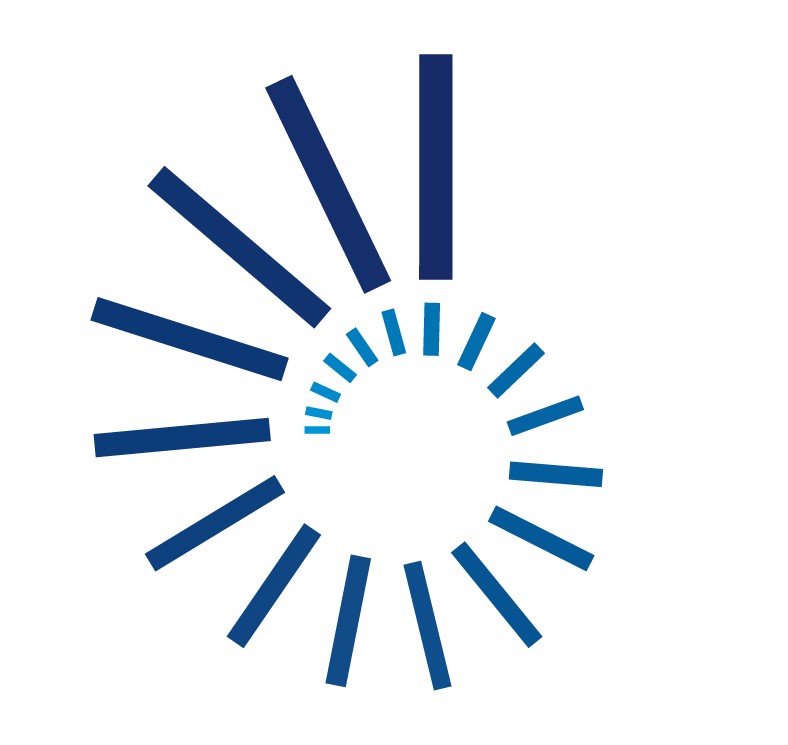Harmonisation
Technology Harmonisation provides all European actors with the framework and the key instruments needed to coordinate space technology at the European level.
This is achieved by identifying the needs and existing capabilities within Europe – as documented in Technology Harmonisation Dossiers – and by agreeing on ‘European Space Technology Roadmaps’, through a process of concertation, coordination and agreement between all participants. These joint Roadmaps aim at optimising public funding and guiding developments to ensure the right technology is at the right level of maturity at the right time.
The process has been developed to achieve better-coordinated research and development activities among actors in the European space sector, establishing a strong technology base as a means of underpinning the worldwide competitiveness of European industry and ensuring the success of future space missions.
Through nearly two decades of operation, and several major reviews that recommended its strengthening, Technology Harmonisation is now an established and well-proven European process. It involves over 1,000 European takeholders, including ESA, national agencies and organisations, the European Commission, the European Defence Agency, and Space Entities (industry, R&D organisations, academia and associations).
In the scope of Harmonisation, space technologies are currently grouped into 47 topics, covering a wide range of subjects, from electric propulsion and de-orbiting technologies, to optical communications and microelectronics. Topics are continuously evolving to recognise the dynamic nature of the space sector and emerging technology trends.
MAIN OBJECTIVES
"Fill strategic gaps" and "Minimise unnecessary duplications"
Consolidate European Strategic Capabilities
Achieve a Coordinated and Commited European Space technology Policy and Planning
Contribute to continuity and coherence between technology and industrial Policies
HOW IT WORKS
Through the Technology Coordination and Planning Office, ESA supervises and coordinates all phases of the Harmonisation process (Mapping and Roadmapping). Every year, up to 10 topics undergo Harmonisation. Therefore, topics are normally addressed and upated every about 4 years.
ESA technical experts are designated to provide the needed technical knowledge and to prepare the documentation: the Technology Harmonisation Dossiers (THD) and the Roadmaps. The final documents are available to all stakeholders via our Harmonisation Document Management System (HDMS: ht tps://tec-polaris.esa.int --> eclipse). If you do not have an account, you can request access by sending an email to harmo@esa.int from a corporate email address providing business affiliation and position in the company.
- Internal coordination across ESA is achieved for technical, strategic and programmatic areas: the active participation of the Competence Domain Leads (CDL) ensures quality, coherence, relevance and consistency of the technical content, while the involvement of the TECNET Chairs Forum and Programme Managers ensures programmatic aspects are taken into account.
- External coordination with the European and Canadian space community is achieved via open consultation rounds four times per year. Note that topics are split into two cycles of up to 5 topics each (see below the topics and key dates for the ongoing cycles), and therefore two Mapping Consultations and two Roadmapping Consultations are held every year.
ESA Technology Harmonisation Advisory Group - THAG
THAG is an ESA delegate body, established in 2006 to advise the ESA Industrial Policy Committee (IPC) on Technology Harmonisation matters, including:
- Technology harmonisation work plans
- Mapping of European capabilities with respect to the needs of the institutional and commercial markets
- Implementation within ESA programmes of agreed roadmaps and conclusions, and identification of national-and European-level funding
- Harmonisation measures to be applied in istitutional programmes and by industry
How to participate
The European Space Technology Harmonisation is a voluntary process, based on transparency and exchange of information. Continuous support from all participants is crucial to the success of this European initiative.
In case of interest in any of the topics addressed by the European Space Technology Harmonisation, the recommended approach is to seek involvement either through your national delegation (in the case of ESA Member and Associate States) or directly through ESA (harmo@esa.int). You will find the contact details of your national delegation in the European Space Technology Master Plan; the delegate may then recommend how to further proceed.
All European space sector stakeholders can access the Harmonisation Documents as well as the European Space Technology Master Plan via the Harmonisation Document Management System (HDMS: https://tec-polaris.esa.int --> eclipse). You may request an account to HDMS by sending an e-mail to harmo@esa.int from a corporate email address providing business affiliation and position in the company.
Ongoing Harmonisation Cycles - topics and key dates
2024 Topics
Cycle 1
Cycle 2
Cryogenics and Focal Plane Cooling
Composite Materials
AOCS and GNC Systems
Model Based for System Engineering
Electrochemical Energy Storage
Electromagnetic Compatibility
Technologies for Passive Millimetre and Sub-Millimetre Wave Instruments
Technologies for Fluid Mechanics
Technologies for Optical Passive Instruments – Stable & Lightweight Structures, Mirrors
Cubesat Propulsion
2024 Meeting Dates
Cycle 1
Cycle 2
November-December 2023
Space Entities Mapping Consultation
February-March 2024
Space Entities Mapping Consultation
16-18 January 2024
Mapping Meeting
9-11 April 2024
Mapping Meeting
March-April 2024
Space Entities Roadmap Consultation
July-September 2024
Space Entities Roadmap Consultation
17-18 June 2024
Roadmap Meeting
27-28 November 2024
Roadmap Meeting
Harmonisation topics
Actuators Building Blocks for mechanisms
Last harmonised in 2021.
Actuators in space are broadly used to operate satellite platform and payload devices. Despite their common use, actuators still represent a critical component as their failure might often lead to severe, or even catastrophic, effects on spacecraft operations. This topic covers motors, transmission stages and position sensors, but not guiding system technologies (e.g. bearing), drive electronics, or force and torque sensors. The appeal of Harmonisation lies in establishing generic component building blocks that reduce the time and cost of developing actuation systems for specific missions.
- Actuators based on electric motors
- Electric motors: brushed motors, brushless motors, stepper motors
- Transmission stages
- Position and speed sensors: switches, low accuracy position sensors, high accuracy position sensors, speed sensors
- Piezo-actuators
- Smart material actuators
- Shape memory alloy actuators
- Other smart material actuators
- Limited stroke actuators
The Technology Harmonisation Dossier (THD) and Roadmap can be accessed via our Harmonisation Document Management System under the following links: THD LINK / Roadmap LINK
If you do not have an account yet, you may request one by sending an email to harmo@esa.int from a corporate email address providing business affiliation and position in the company.
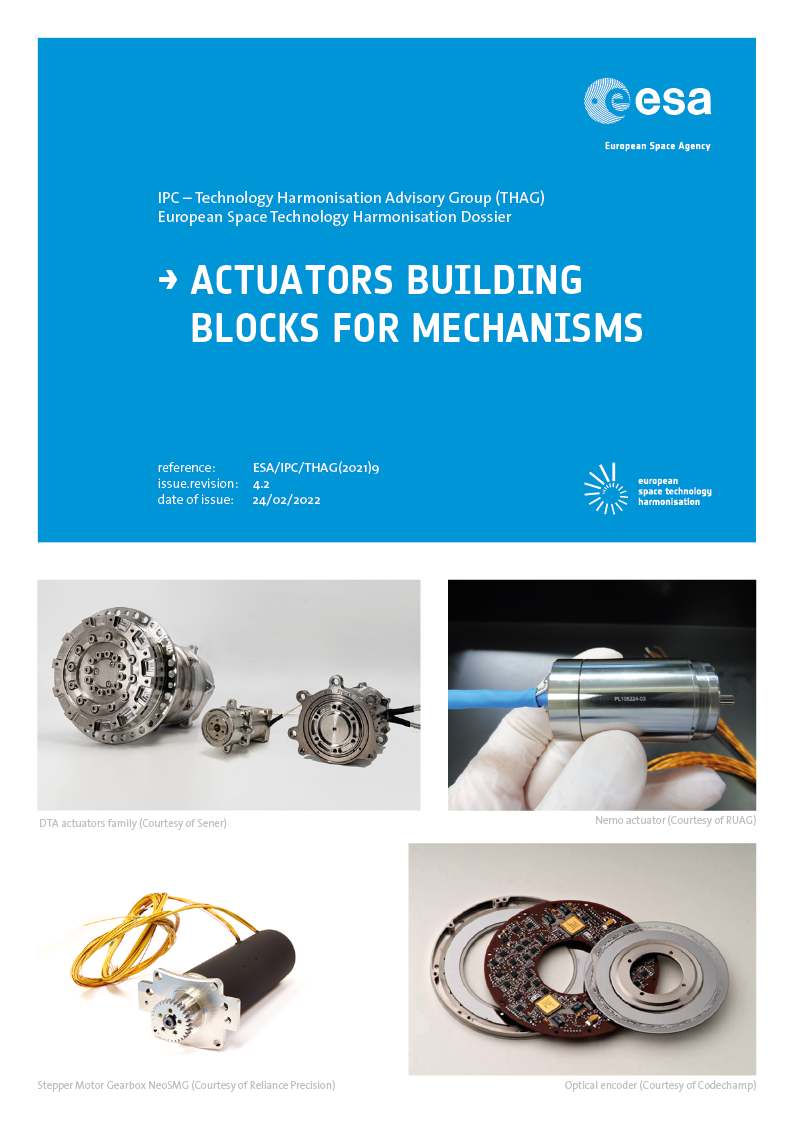
Additive Manufacturing
Last harmonised in 2021.
Additive Manufacturing (AM) is widely regarded as a revolutionary technology that promises to transform design and production in many industries, including. This topic covers manufacturing technologies by additive processing of materials, as well as hybrid manufacturing by combining additively made appendices onto conventionally made parts or by mixing two additive manufacturing processes to make a single part. Hybrid manufacturing also includes aspects such as machining of interfaces, surface finishing, assembling and joining (e.g. welding of Al alloys) and thermal treatments. The topic addresses the areas listed below.
- Design tools, guidelines and rules based on geometrical capabilities of AM.
- Development of materials for AM:
- New/specific materials best suited to AM (e.g. low CTE alloys, new ceramics, high strength aluminium alloys, MMC, hybrid polymers compatible with C fibres).
- Adaptation of conventional materials to make them compatible with AM.
- Material procurement, characterisation and recycling.
- PA and QA requirements and verification tools required to reach the quality level for space use.
- Out-of-Earth AM technologies.
The Technology Harmonisation Dossier (THD) and Roadmap can be accessed via our Harmonisation Document Management System under the following links: THD LINK / Roadmap LINK
If you do not have an account yet, you may request one by sending an email to harmo@esa.int from a corporate email address providing business affiliation and position in the company.
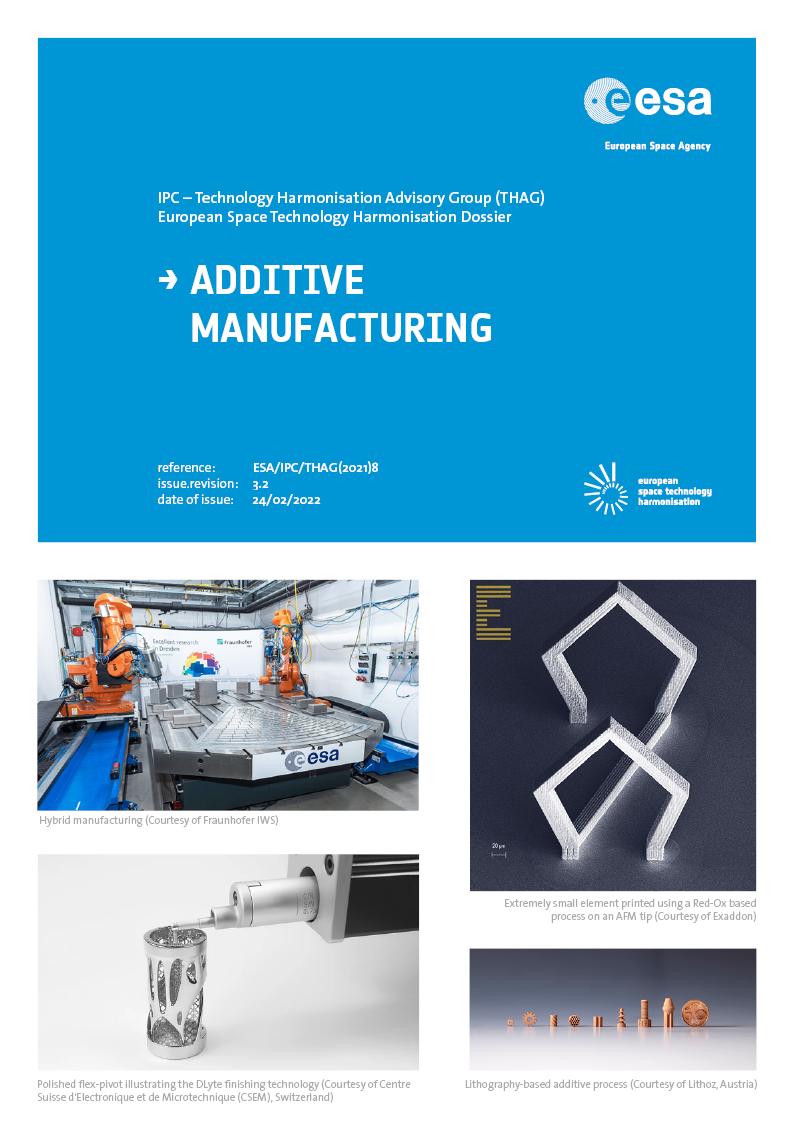
AOCS Sensors and Actuators
Currently in Harmonisation. Publication expected late 2024.
The guidance, navigation, and control (GNC) or attitude and orbit control subsystem (AOCS) of a space vehicle relies on estimating the state of the spacecraft from measurements made by sensors, deriving the required control actions by comparing with the guidance profile to change the current state of the spacecraft into the desired state via control actions using actuators. This topic covers the hardware elements of the GNC/AOCS system.
- Active Pixel Sensor (APS) detectors for AOCS
- Star trackers
- Inertial Measurement Units (IMU), gyroscopes and accelerometers
- Magnetometers
- Magnetic Torquers
- Sun sensors
- Earth sensors
- Hybrid navigation sensors
- 3D cameras, altimeters and LIDARs for AOCS
- Optical navigation sensors
- Reaction wheels
- Control moment gyroscopes
The Technology Harmonisation Dossier (THD) and Roadmap can be accessed via our Harmonisation Document Management System under the following links: THD LINK / Roadmap LINK
If you do not have an account yet, you may request one by sending an email to harmo@esa.int from a corporate email address providing business affiliation and position in the company.
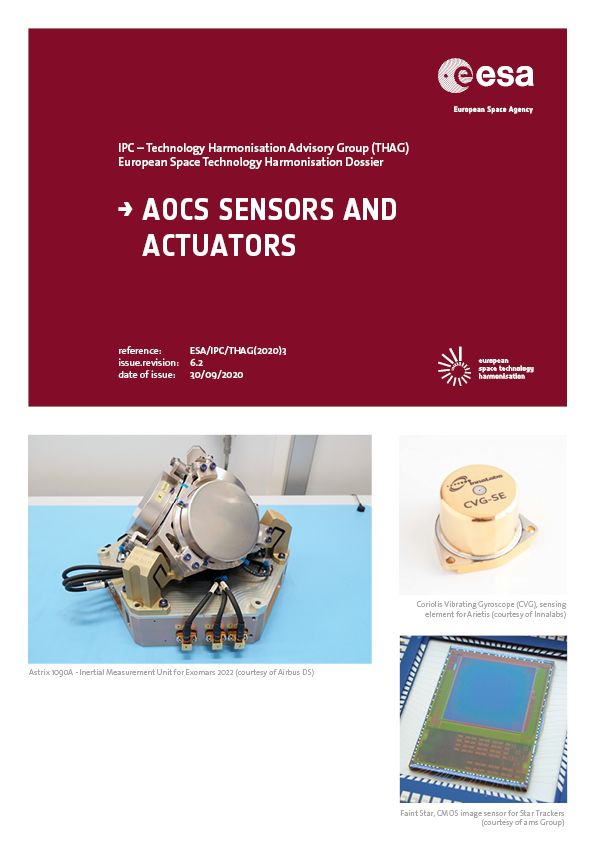
Array Antennas and Periodic Structures
Last harmonised in 2022.
An array antenna is a system obtained by connecting a group of small radiating sources and organising them in such a way that their received or transmitted signals are in the correct and desired electrical relationship (in terms of phase and amplitude). While reflector antennas with a single feed usually scan the beam mechanically by moving the reflector, a phased array can scan the beam electronically by changing the relative excitation of its elements. This topic covers space-borne and ground-based Array Antennas including transmit and receive array antennas categorised as listed below.
- Passive arrays:
- Direct Radiating Arrays in transmission or reception
- Reflectarrays & Transmitarrays
- Lenses
- Active arrays:
- Direct Radiating Arrays in transmission or reception
- Reflectarrays & Transmitarrays
- Lenses
- Hybrid arrays:
- Arrays with hybrid Electronic and Mechanical scanning
- Arrays with hybrid RF & Digital and/or Photonic beamforming
- Semi-Active Direct Radiating Arrays in Tx or Rx
- Arrays organized in Overlapped Subarrays
In terms of applications, the topic addresses broadband and broadcast active/flexible antennas for GEO (L to Ku/Ka/ Q/V), government satcom active antennas including anti-jamming and source location, constellations mainly active antennas including mobile and radar DRA’s (L to Ka), intersatellite link high-speed data transmission antennas, Very High Throughput Satellites (VHTS) and digital HTS/VHTS, mobile and Science missions (array fed reflector up to 12m), passive multi beam antennas for GEO (L to Q/V) including feeder link/gateway antenna, mobile communication (mainly L/S- band, broadcast), navigation, Synthetic Aperture Radar (high performance SAR EO systems in L-, C- and X-Band), passive radiometers and interferometers (multiband L to Ka and up to mm wave) and Earth Observation/Science high-speed data transmission antennas.
The Technology Harmonisation Dossier and Roadmap can be accessed via our Harmonisation Document Management System under the following links: THD LINK / Roadmap LINK
If you do not have an account yet, you may request one by sending an email to harmo@esa.int from a corporate email address providing business affiliation and position in the company.
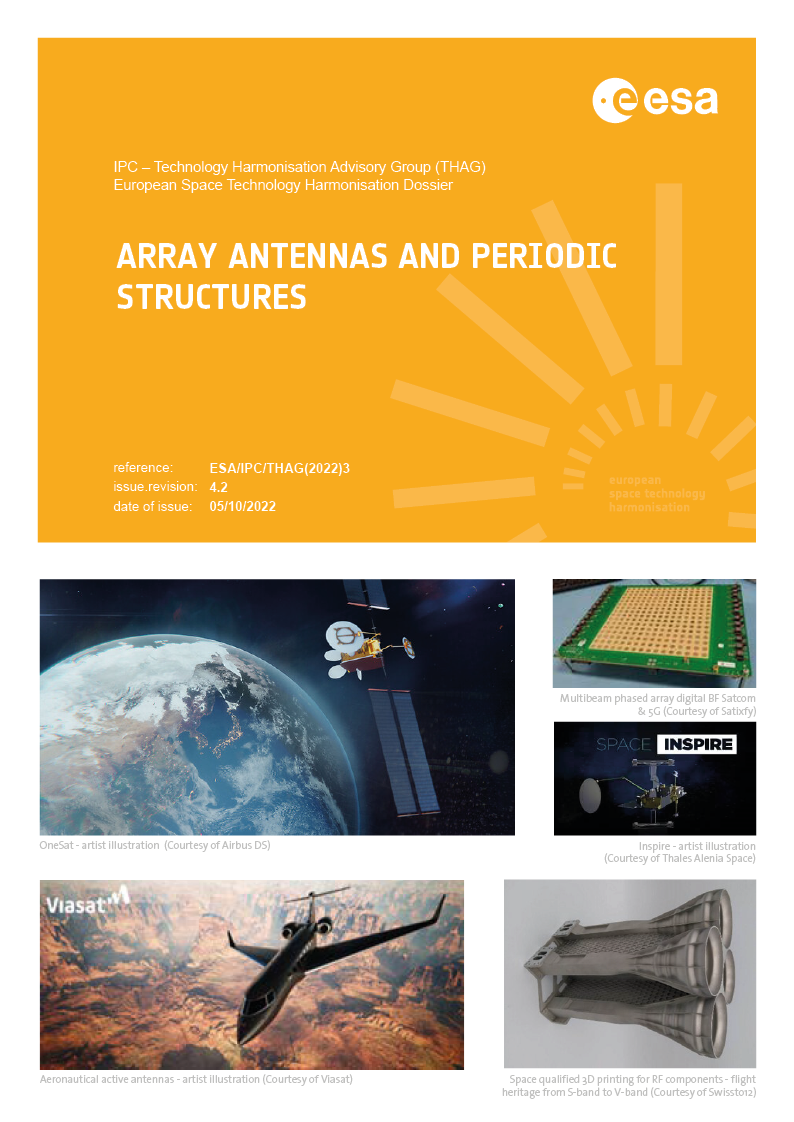
Automation and Robotics
Last harmonised in 2022.
This topic covers the technologies needed for the implementation of space robotics missions. It is structured in the areas listed below.
- Space robotics applications
- Orbital robotics: Active debris removal and in-orbit servicing, manufacturing, and assembly
- Planetary robotics (handling/assembly of surface infrastructure elements, novel aerobot concepts, novel robot concepts for exploration, micro and nano rover concepts and swarms, interaction/support with in-situ resource utilisation for manufacturing)
- Automation and robotics systems
- Manipulation systems: large (>3m) and medium to small (<3m) robot arms, end-effectors, tools, tool exchangers, and system interconnects for orbital use
- Mobility systems: underground, surface, and aerial mobility, and payload automation
- Automation and robotics components
- Sensing and perception processing
- Control, autonomy and intelligence
- Motion and actuation
- Human-Robot interaction
- Robot ground testing
The Technology Harmonisation Dossier (THD) and Roadmap can be accessed via our Harmonisation Document Management System under the following links: THD LINK / Roadmap LINK
If you do not have an account yet, you may request one by sending an email to harmo@esa.int from a corporate email address providing business affiliation and position in the company.
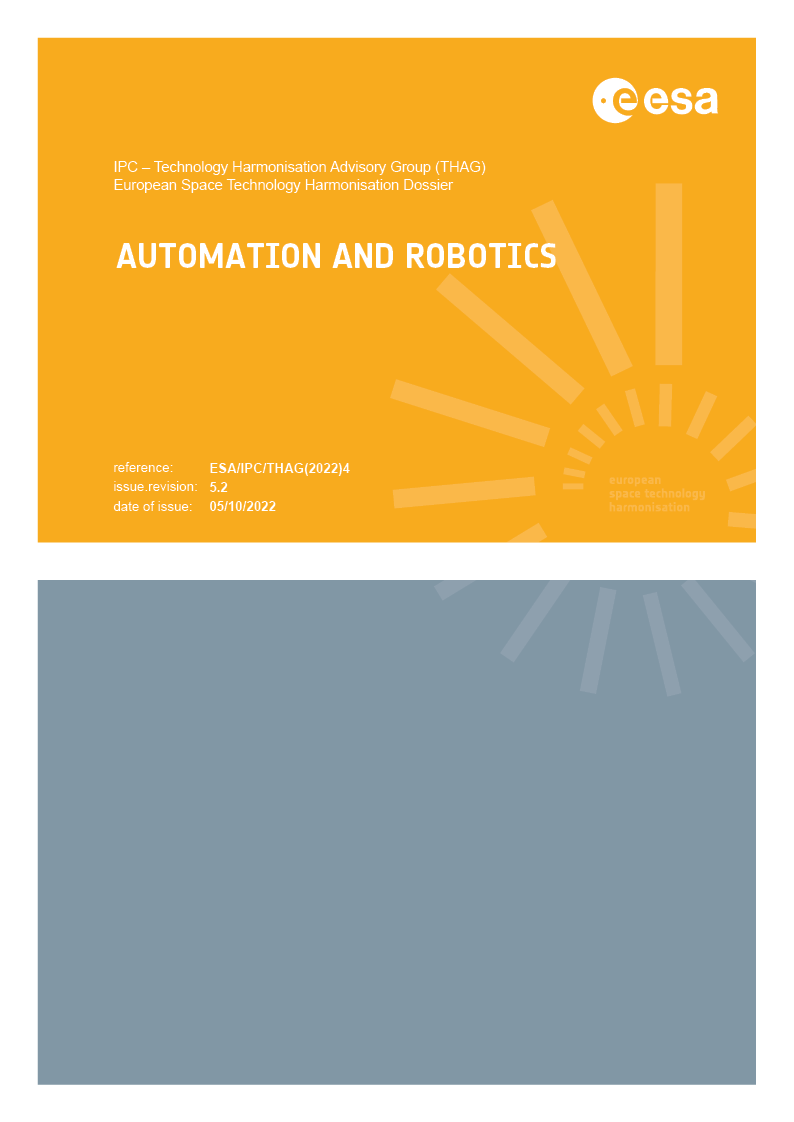
Avionics Embedded Systems
Last harmonised in 2021. Candidate for revisit in 2025.
Avionics Embedded Systems control all on-board functions that manage a spacecraft and its communications, payload and mission. This topic includes the areas listed below.
- Architectures and interfaces: avionics architecture covers software, hardware and communications architectures
- Avionics system functions
- On-board communication
- On-board autonomy
- Fault detection, isolation and recovery
- Distributed systems (for systems formed by 2 or more satellites)
- Operability
- Development process and related methods and tools
- Model based avionics engineering (see also Model Based for System Engineering)
- Advanced control techniques
- Evolvable/reconfigurable avionics systems
- Multicore processors
- Verification and validation
The Technology Harmonisation Dossier (THD) and Roadmap can be accessed via our Harmonisation Document Management System under the following links: THD LINK / Roadmap LINK
If you do not have an account yet, you may request one by sending an email to harmo@esa.int from a corporate email address providing business affiliation and position in the company.
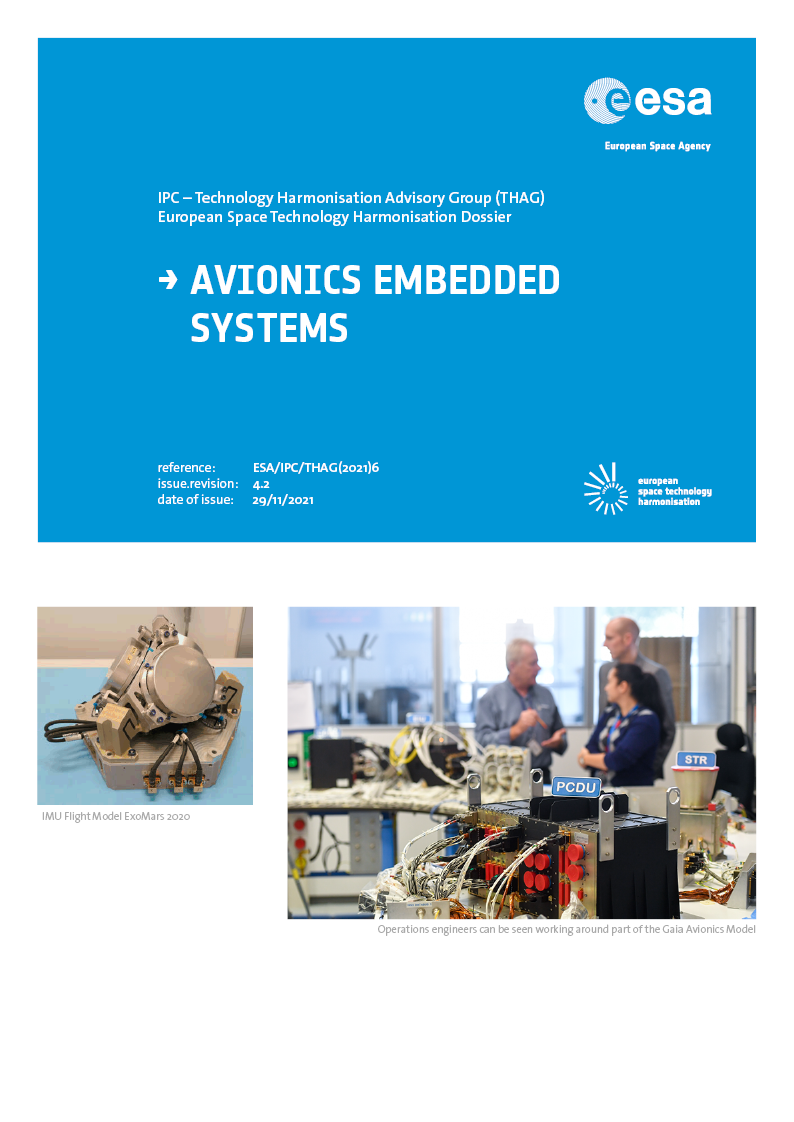
Big Data from Space
Last Harmonised in 2023.
This topic focuses on the whole data lifecycle, from data acquisition (e.g. by space-borne, low or high altitude sensors, ground-based sensors) retrieved directly or via satellite and ground relay, to successive data management, analysis and exploitation in various domains and applications such as Earth Observation, Space Science, Satellite Telecommunications, Satellite Navigation, and Space Safety. The topic covers four main layers of the space data lifecycle.
- Data Acquisition: collection and acquisition of different types of data, sources, actors and methods.
- Data Organisation: formats, structure and storage methods.
- Data Analysis: processing and transformation (algorithms, libraries, toolboxes) including visualisation methods and tools.
- Information Provision: services based on the extracted information and value-added processing for decision making.
The Technology Harmonisation Dossier (THD) and Roadmap can be accessed via our Harmonisation Document Management System under the following links: THD LINK / Roadmap LINK
If you do not have an account yet, you may request one by sending an email to harmo@esa.int from a corporate email address providing business affiliation and position in the company.
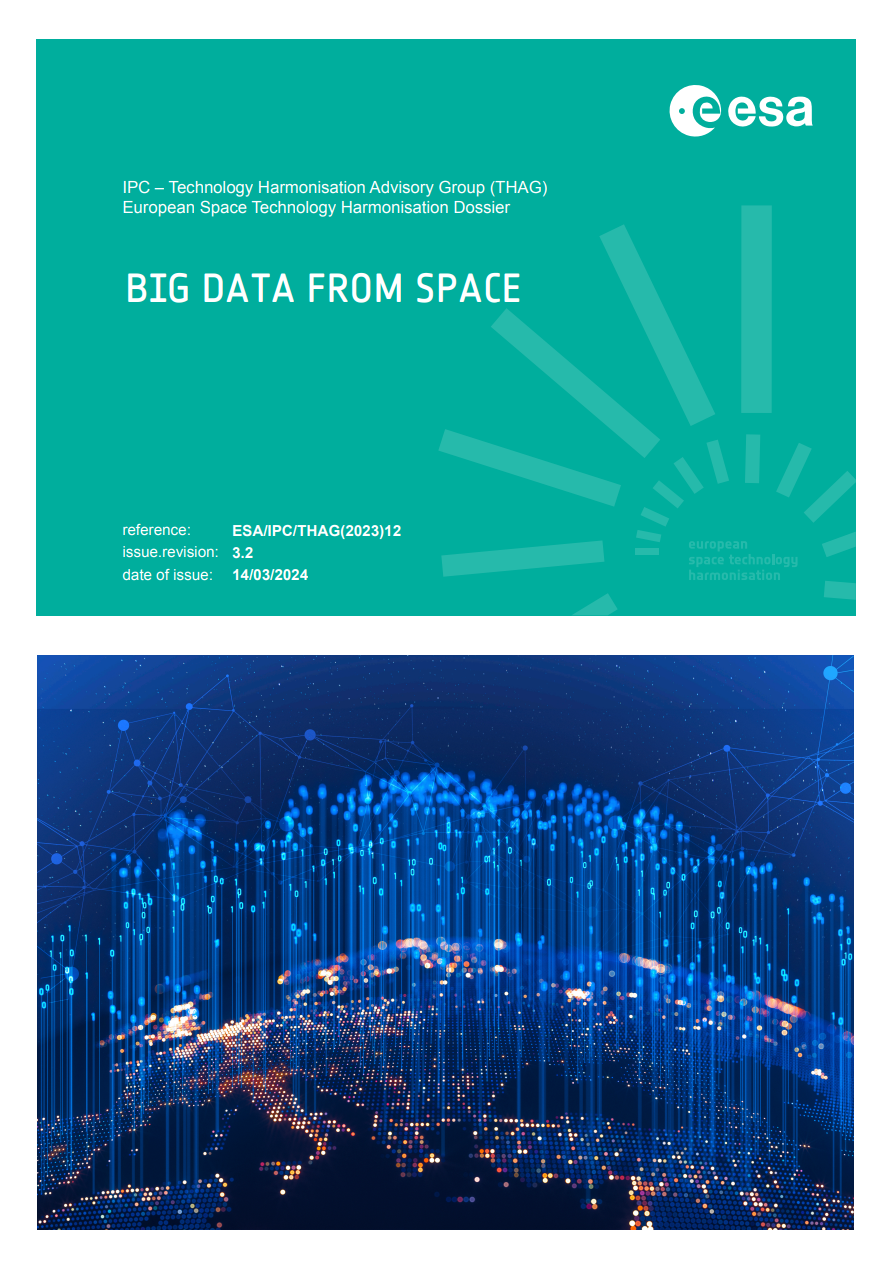
Chemical Propulsion - Components (including tanks)
Last Harmonised in 2023.
Chemical Propulsion includes different types of propulsion systems and components for space systems, from simple cold gas systems to monopropellant and bipropellant systems with increasing complexity. The corresponding thrust levels range from a several milli-Newton up to several kilo-Newton, as required for exploration activities. This topic covers the areas listed below.
- Chemical thrusters
- Cold Gas
- Mono-propellant (catalytic decomposition)
- Bi-propellant (Unified and Dual-mode), including green propellant compounds
- High thrust hydrocarbon engines (e.g. LOX/kerosene, LOX/ethanol)
- Solid propellant motors
- Hybrid thrusters (solid and liquid propellants in bipropellant combination)
- Thin walled tanks
- Propellant and pressurant tanks
- Electric propulsion Xenon tanks
- Smart tanks (with integrated sensors)
- Pressure regulators and sensors
- Filters
- Valves: service valves, isolation valves (pyrotechnic valves, and shape memory alloy valves), latching valves, check valves
- Electric pumps
- Micro-launcher, in-space transportation and return from space engines (for de-orbiting and landing)
For chemical propulsion technologies intended for CubeSat applications (equal or below 0.5N per thruster) please see CubeSat Propulsion.
The Technology Harmonisation Dossier (THD) and Roadmap can be accessed via our Harmonisation Document Management System under the following links: THD LINK / Roadmap LINK
If you do not have an account yet, you may request one by sending an email to harmo@esa.int from a corporate email address providing business affiliation and position in the company.
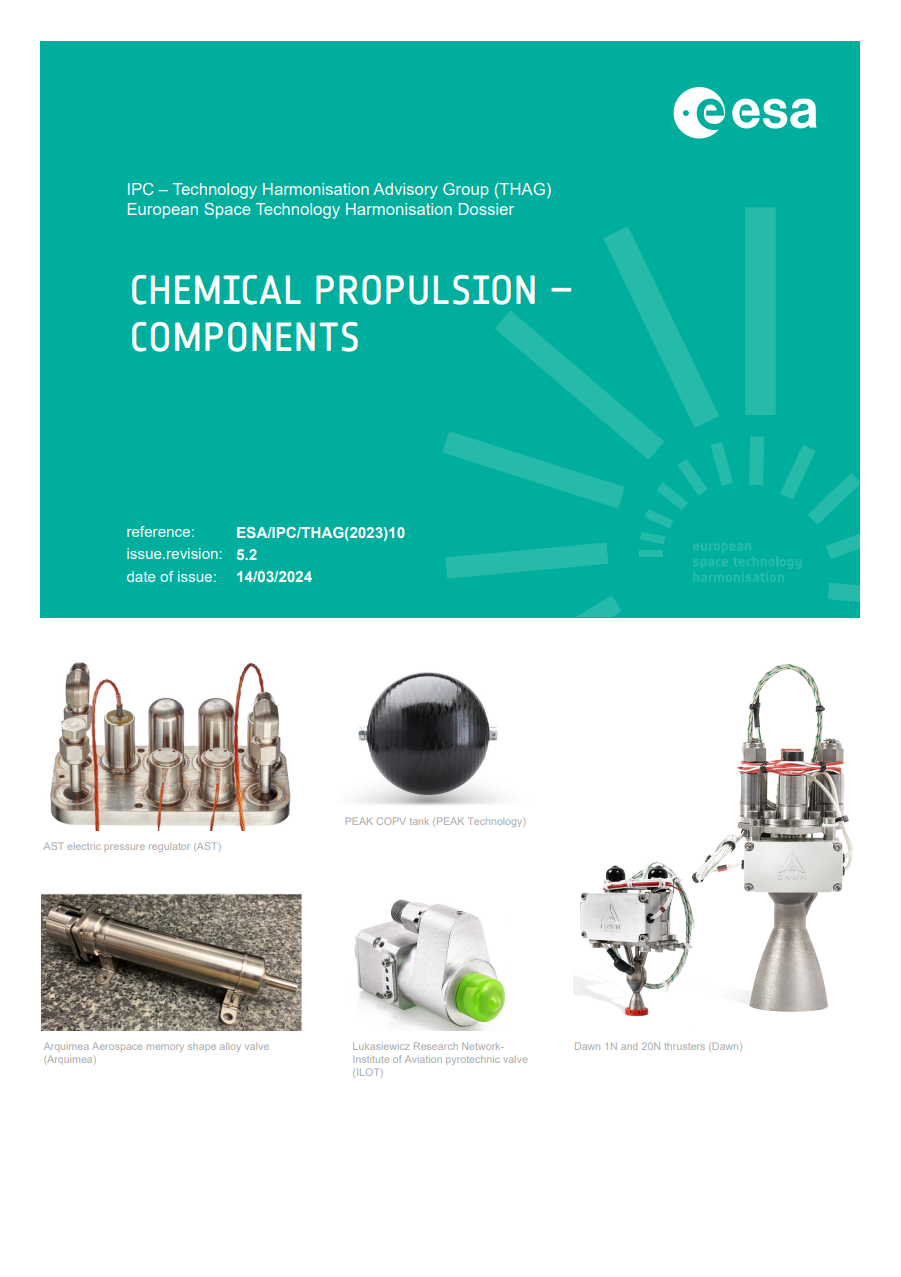
Coatings
Last harmonised in 2023.
This topic addresses the design, modelling, manufacturing, and characterisation of coatings for use in space. A classification of the covered technologies is done in three categories, based on the objective of the coating.
- Coatings for ground and space environment protection: includes, among others, coatings for corrosion, radiation, or atomic oxygen protection.
- Coatings for operational environment protection: includes coatings to protect materials from the constraints imposed by the application. E.g. environmental barrier coatings for high temperature applications (e.g. propulsion, re-entry) and conformal coatings for electronic components.
- Functional coatings: to impart a specific function to material on which they are deposited. This category includes, among others, coatings for antennas and RF components, optical components, and variable emissivity coatings for thermal control.
Transversal aspects to the three coating categories such as design, modelling, manufacture, characterisation and verification are also covered.
The Technology Harmonisation Dossier (THD) and Roadmap can be accessed via our Harmonisation Document Management System under the following links: THD LINK / Roadmap LINK
If you do not have an account yet, you may request one by sending an email to harmo@esa.int from a corporate email address providing business affiliation and position in the company.
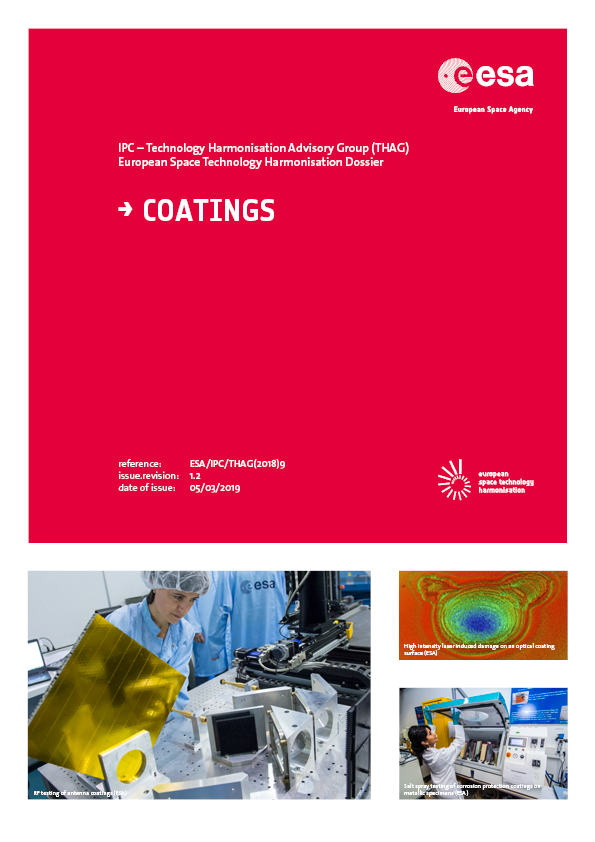
Composite Materials
Currently in Harmonisation. Publication expected early 2025.
This topic covers all relevant families of composite materials for space applications, including fibre-reinforced thermoset (such as epoxy and cyanate ester) and thermoplastic (such as PEEK) composites, carbon-carbon composites, ceramic matrix composites, and metal matrix composites. The content of the topic is classified as listed below.
- Polymer Matrix Composites (PMCs): polymer-based resin (thermoset or thermoplastic) matrices reinforced with a variety of fibres (glass, carbon, aramid). These are the most widely used composite materials for space applications.
- Metal-Matrix Composites (MMCs): metal (e.g. aluminium, magnesium, titanium, copper, silver) matrices reinforced with fibres or particles that can resist the manufacturing process (e.g. silicon carbide or high melting-point metal).
- Ceramic Matrix Composites (CMCs): carbon (or graphite) matrices reinforced with carbon (or graphite) fibres. Mainly used in very demanding applications (high temperature environments, high stability).
For each of the categories above, various materials as well as manufacturing processes are discussed.
The Technology Harmonisation Dossier (THD) and Roadmap can be accessed via our Harmonisation Document Management System under the following links: THD LINK / Roadmap LINK
If you do not have an account yet, you may request one by sending an email to harmo@esa.int from a corporate email address providing business affiliation and position in the company.
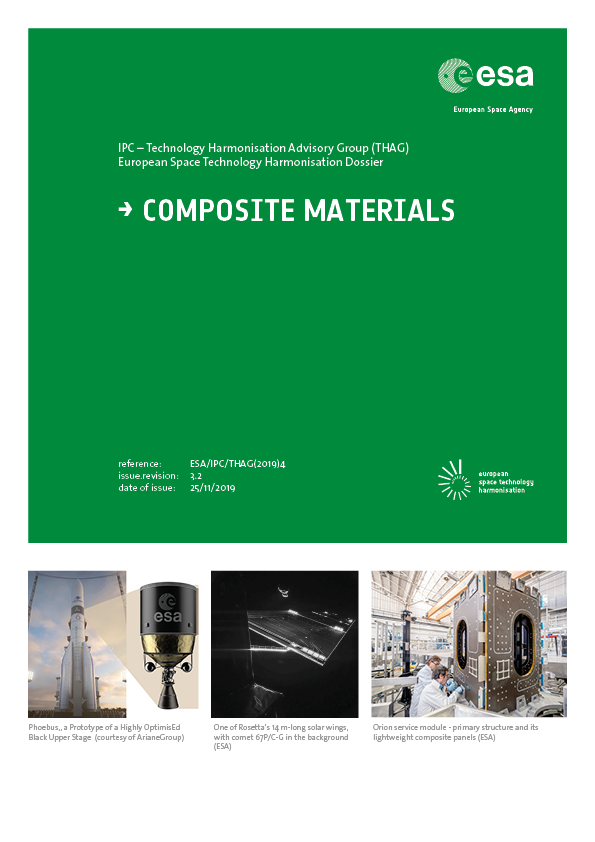
The European Space Technology Master Plan
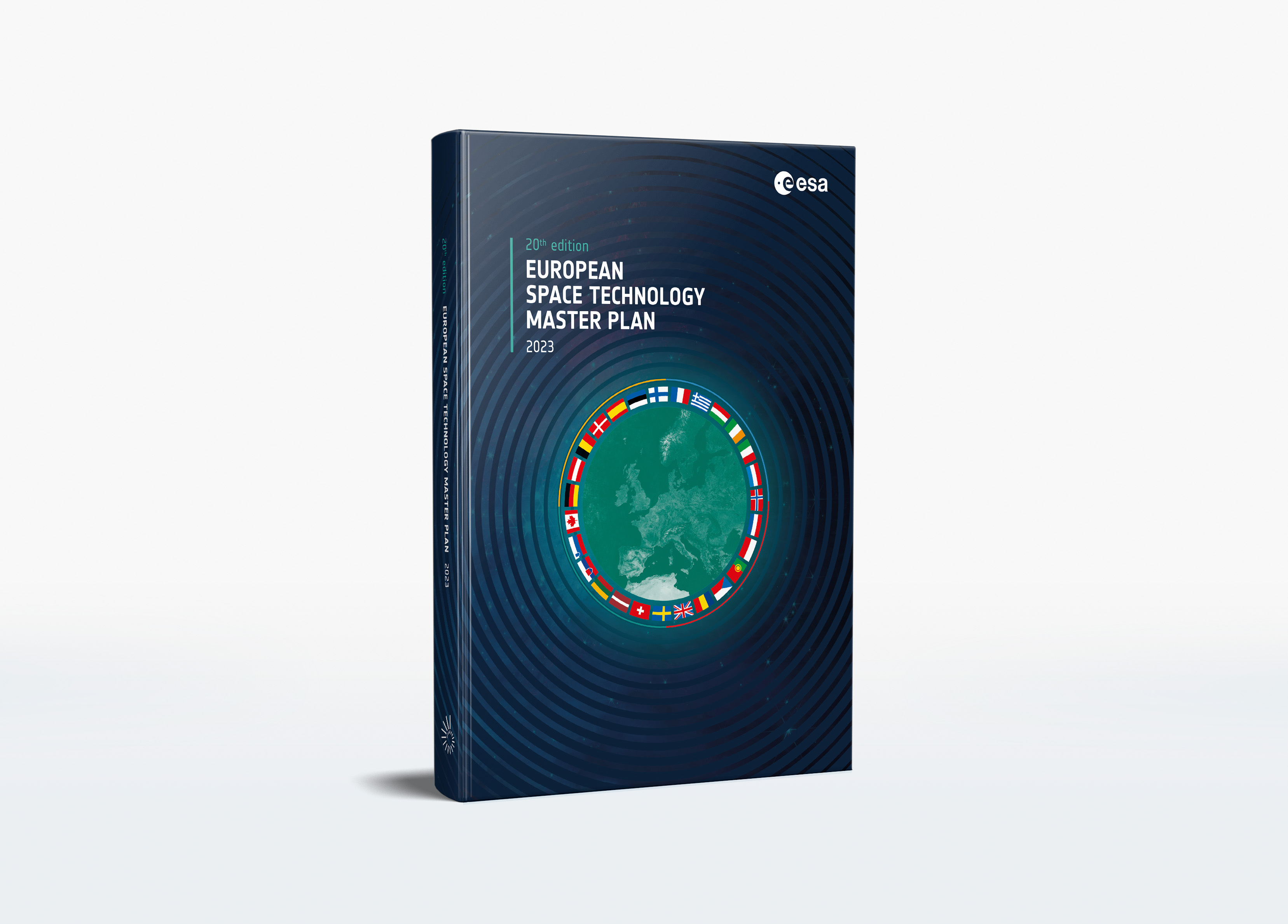
The ESTMP sets out a European vision of technology for the coming years to support decisions of European stakeholders on space technology R&D.
The European Space Technology Master Plan (ESTMP), updated annually by ESA with all stakeholders, constitutes a comprehensive overview of technology R&D across Europe. In particular, it includes:
- A snapshot of the space sector in the global context;
- European institutional space technology R&D budgets;
- An overview of the ESA technology R&D programmes updated to include new programmes stemming from the last Council at Ministerial;
- An overview of technology programmes and initiatives by the European Commission and the European Defence Agency, including the Critical Space Technologies for Non-Dependence, jointly with ESA;
- A presentation of ESA participating states, including organisation of national space technology R&D;
- A list and description of the European Space Technology Harmonisation topics including Roadmap aims.
The most recent edition is the ESTMP 2023. For access to the publication contact us at estmp@esa.int from a corporate email address providing business affiliation and position in the company.



